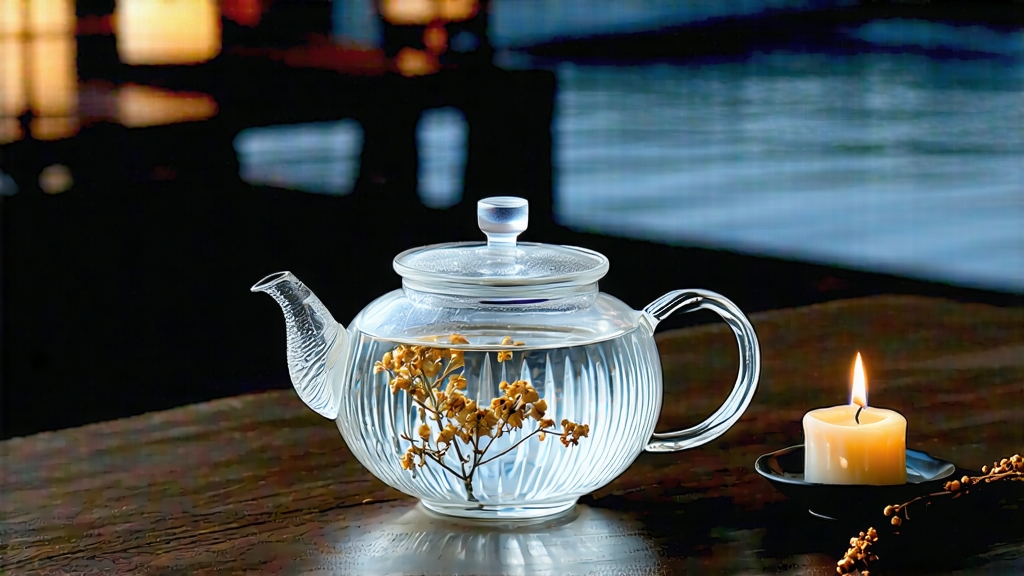
White tea is the most minimally handled of all China’s six great tea families, and within that quiet realm Bai Hao Yin Zhen—literally “White-Hair Silver Needle”—sits like a solitary moon on a midnight pond. To the uninitiated it can look almost too delicate to be tea: straight, silvery spears that seem better suited to a fairy’s quiver than to a teapot. Yet each needle carries centuries of Fujian’s mountain mist, monsoon breath, and the restrained wisdom of farmers who believe that the best craft is the least craft. This essay invites the international reader to step past the romance, into the history, horticulture, chemistry, and choreography that make Silver Needle one of the world’s most quietly luxurious beverages.
-
Historical whispers
The first verifiable record of “white down” tea appears in Song-era treatises (960-1279 CE), where court chroniclers describe a tribute of “small buds wrapped in silk, pale as frost.” Those buds almost certainly came from the same Dai Bai cultivar still used today in northern Fujian. When the Ming dynasty relaxed the compressed-tea tribute system in 1391, loose white buds travelled north along the Tea-Horse Road, gaining the nickname “silver coin tea” because merchants literally stacked the needles like currency. European traders encountered it in Canton during the 1780s, mis-labelled it “Pekoe” (a corruption of the Amoy dialect phrase for white down), and shipped it to London where it perfumed duchesses’ drawing rooms. For two centuries Silver Needle remained a curiosity; only after 2003, when Chinese domestic markets rediscovered white tea’s low caffeine and high antioxidant profile, did production expand beyond a few mountain hamlets. Today Fuding and Zhenghe counties share a protected geographical indication, yet the total yearly harvest of authentic Silver Needle is still less than 0.2 % of China’s tea output—rarer than Darjeeling’s first flush. -
Terroir: two counties, two personalities
All true Silver Needle springs from the Dai Bai (Big White) or, more recently, the Dai Hao (Big Down) clonal bushes, but the counties diverge in soil and sky. Fuding sits on granite bedrock; its sandy, slightly acidic soils drain monsoon rain within hours, forcing roots to dive deep for minerals. The result is a tea famous for “cold fragrance,” a lilac-mineral note that arrives after swallowing. Zhenghe, by contrast, lies on red volcanic tuff that retains moisture and potassium; its needles feel creamier, with ripe-melon sweetness and a faint ginger spark. Altitude also modulates character: gardens above 600 m harvest ten days later, developing more L-theanine and therefore more umami silkiness. In short, Fuding is moonlight on quartz; Zhenghe is moonlight on suede. -
Plucking discipline
The picking window opens when the spring dao bai (white knife) reaches 2.5–3 cm length but before the leaf unfurls—typically five clear days around the Qingming festival. Experienced pluckers use a “twist-lift” motion that snaps the bud without squeezing sap, dropping it immediately into a shallow bamboo sieves to prevent compression heating. A top worker gathers barely 500 g fresh buds per hour; 30 000 buds equal one finished kilogram. Rainy days are automatically rejected, because surface moisture would lengthen oxidation later. The pluckers themselves fast on garlic and chives, believing that skin oils can taint the down. Such reverence borders on ritual, yet it is the first, non-negotiable filter between good and ethereal. -
Craft: the art of doing almost nothing
Unlike green tea’s kill-green wok or oolong’s bruising, Silver Needle’s processing is a meditation on restraint. The classic sequence is: wither → dry → sort → rest → fire.
Withering occupies 60 % of total labour. Buds are laid 2 cm deep on bamboo trays stacked like screens in a sun-lit loft. For 36–48 hours they lose moisture while enzymes nibble on polyphenols, generating floral lactones. The crucial variable is air, not sun; direct sunlight would cook the down and fix greenness. Instead, farmers open and close louvered windows every twenty minutes, riding the valley’s diurnal rhythm